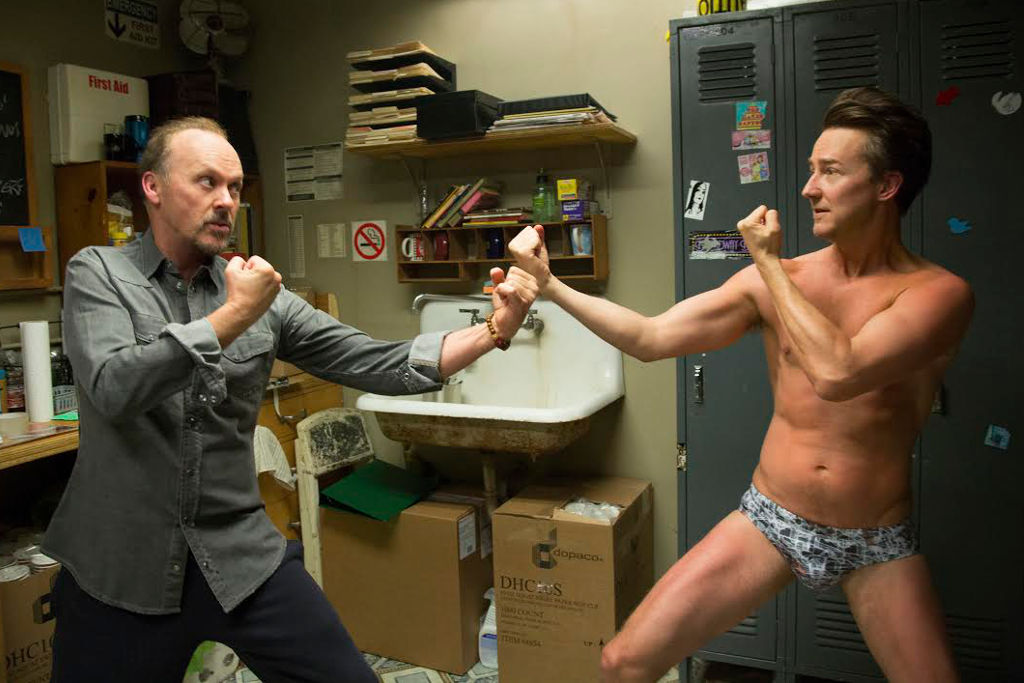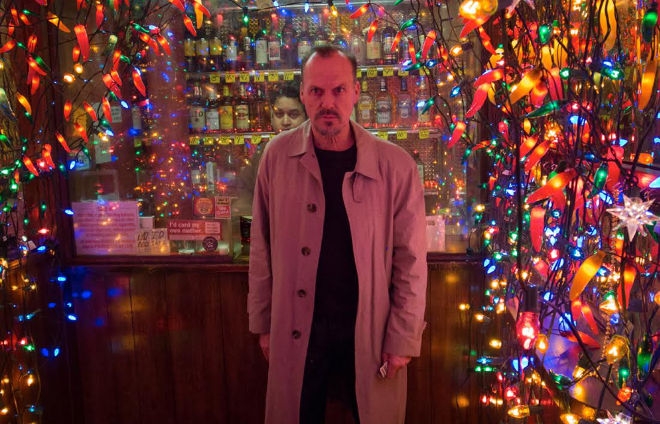Birdman Is The Best Or Worst Major Artistic Statement Of The Year
When high style meets dumb ideas, it can be hard to tell which way is up.

Within certain circles, Alejandro Gonzáles Iñárritu may be the most divisive filmmaker around. The fact that these circles are inhabited by Oscar-bloggers and self-described cineastes doesn’t detract from the potency of the conflict. Shit gets heated.
To his fans, Iñárritu makes technically exquisite, cathartically emotional, and socially conscious art films, dense with enriching philosophical and moral questions. To his detractors, Iñárritu is a high-class flim-flam man, peddling self-important bunkum to a middlebrow audience desperate to demonstrate their appetite for ‘art’ without actually possessing the ability to identify the real thing.
His latest and fifth film is Birdman (or The Unexpected Virtue of Ignorance), which stars the Golden Globe-winning Michael Keaton as a washed up superhero movie star named Riggan Thomson who makes a last gasp bid for artistic credibility by writing, directing, and starring in a Raymond Carver adaptation on Broadway. Emma Stone and Edward Norton co-star as Riggan’s recovering-addict daughter and a swaggering New York theatre sensation, respectively. Naomi Watts, Zach Galifianakis, and Amy Ryan fill out the rest of the cast.
Although critical reaction has been more favorable to Birdman than it was to Iñárritu’s last film—the Spanish language Biutiful—if you look closely enough, the same old tensions are evident. In The Monthly, Luke Davies called the film “cerebrally, culturally, emotionally, and technically breathtaking”. Over on The Dissolve, however, Scott Tobias called the film sour, embarrassing, and labeled Iñárritu a “pretentious fraud.”
So which is it?
Style, Or Substance? It’s A Long Shot
Although the film takes place over the course of the several days leading up to the official opening of Riggan’s play, Iñárritu has shot Birdman to affect the appearance of one continuous long take, with the edits and time jumps elegantly disguised. The conceit is similar to the method his buddy Alfonso Cuarón used in 2013’s Gravity, but where that film used the extended take to ratchet up the tension, Birdman seems to have a different purpose in mind.
The long take (sometimes known as a ‘oner’) is a time-honoured and oft-abused element of style. In its most obvious form, the oner pulls it audience along for a trip, matching the motion of the camera to the agency of its subject to give the viewer a vicarious thrill. Think Henry Hill treating his date to special service at the Copacabana in Goodfellas:
Other filmmakers use the long take to bind together their characters into a community (like the pool party in Paul Thomas Anderson’s Boogie Nights), or to show them working in harmony (like, umm, Joss Whedon’s The Avengers).
The reasons why a director might favour shots of extended duration are endless (see the work of Taiwanese filmmaker Tsai Ming-liang for a more extreme, focused variation), but this popularised form—the Steadicam or dolly-assisted long kinetic trip—has a certain cultural currency – which is why it sometimes gets over-used by directors keen to prove their arty bona-fides (see: Joe Wright). At its worst, the long take is like Advanced Filmmaking for Dummies.
So it’s kind of amazing that Iñárritu has gone this way for Birdman, since ‘Advanced Films for Dummies’ could be the title of an eventual critical takedown of his career. Birdman’s long-take style is perfect fodder for Iñárritu’s critics and partisans: to his fans, it’s proof of his ambition and arty seriousness; to his foes, it’s proof of his aesthetic fraudulence.

–
Is Birdman Bull?
The long takes in Birdman mostly keep the film focused in on the perspective of Riggan, for whom the lead-up to the play’s opening is an escalating fever dream of mishaps and disasters, and whose mind is undergoing a total psychic break – manifesting imaginary psychic powers and holding conversations with his former superhero character, the titular Birdman. But they’re also a great, big, flashing neon sign for the film’s thematic intentions.
Birdman’s narrative is structured around a series of pretty lame dialectical conflicts: film art versus theatre art; artists versus critics; real fame versus internet fame (feel free to tune out whenever Emma Stone starts explaining Twitter to her dad). The long take method allows Iñárritu to have his cake and eat it too. His film spends a lot of time making an argument for the supremacy of theatre over film as a forum for authentic artistic expression, and so by articulating his movie in long, talky, actorly scenes he lends a theatrical legitimacy to a filmic endeavor.
This is the kind of move that exasperates Iñárritu’s critics. His films present bogus grand themes with such artistic conviction that the audience in tricked into buying into their worldview. To his critics, that worldview is a bunch of gussied-up hokum they are savvy enough to see through; to his fans, though, they’re getting something genuinely felt and thoughtful.
Riggan seems to thoroughly believe that a successful theatre production will redeem him from his Hollywood past, and the film continually plays him off Norton’s Mike Shiner, an anti-Hollywood, Broadway purist, who is also a fantastically talented actor. This dynamic, coupled with the long take style, seems to make the film’s opinion on the cinema/theatre conflict pretty cut and dried. But Shiner is also a total dick, and Riggan is kind of crazy — so you could argue also that the film has some perspective on the ridiculousness of their position. The truth may lie somewhere in-between.
Birdman’s most irritating narrative strand runs along the conflict between Riggan and haughty New York Times theatre critic Tabitha Dickinson (played by Lindsay Duncan), who is appalled that Hollywood is infecting her beloved Broadway, and has vowed to use her make-or-break critical powers to crush Riggan’s play on opening night. This is another version of Birdman’s cinema/theatre dichotomy (with a bonus lacing of contempt for those who critique and don’t create), and, as elsewhere in the film, it’s pretty silly. But (mild spoilers ahead) the ultimate resolution to this conflict is so outlandishly absurd that it’s hard to believe that the film takes it all that seriously.
This is what it really comes down to: the anti- Iñárritu camp (like Tobias’ charge of ‘pretension’) mostly rests on whether or not we ought to believe that the director shares the same convictions as his characters. But this is pretty hard issue to parse through, since, even though Birdman is ostensibly a comedy, it’s so self-serious that irony seems to be a distant concept. And, again, Iñárritu’s technique is so immaculate that his film seems genuinely engaged by its own absurd themes.
So Birdman could be big old pile of bullshit, a sophisticated artistic statement, or something in between. It all depends on how much benefit of the doubt you’re willing to offer its creator. When high style meets dumb ideas it can be hard to tell which way is up.
–
Birdman hits Australian cinemas this Thursday.
–
James Robert Douglas is a freelance writer and critic in Melbourne. He tweets from @jamesrobdouglas